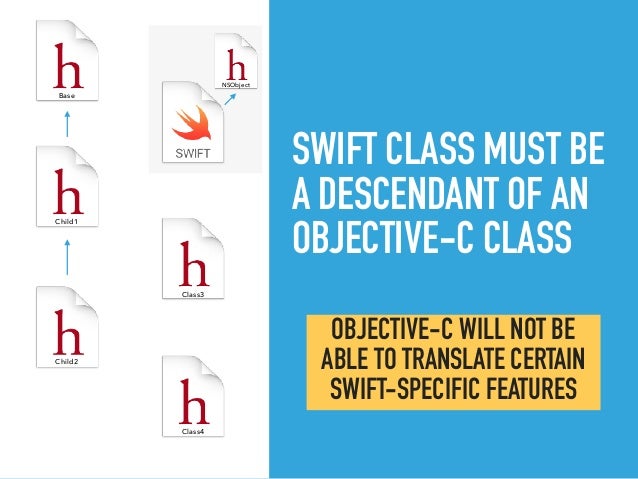

If you need to do it manually though, you can do it by choosing File > New > File > (iOS, watchOS, tvOS, or macOS) > Source > Header File.ģ. Create a single new Swift class for the Objective-C. Xcode will automatically create a header file so you don’t have to do it manually. m file from a target using the file inspector. You can leave the larger classes like AppDelegate for the very end.Ģ. Remove the. Therefore, it’s a good idea to begin the migration process by choosing an Objective-C class that has no subclasses. Here are the steps you will take to complete the migration from Objective-C to Swift:ġ. You cannot have an Objective-C subclass in Swift classes. Once your Objective-C is at its most modern, you can begin to translate your app from Objective-C to Swift, one class at a time.

Apple tells you how to do that in detail here. You can quickly modernize and tidy up your Objective-C code base in Xcode, by updating components like instance type, properties, enumeration macros and object initialization. Getting your Objective-C ready for migrationīefore you begin migrating your Objective-C code to Swift, you must make sure that the two are fully compatible and to do that, your Objective-C code must be compliant with the most modern coding practices. This way, not only will your app have some cool new features but also, this is a great way to get started with Swift. In fact, you can add new Swift features to an Objective-C app too.

Since Objective-C and Swift are very compatible, you can actually add some Swift components to an Objective-C app and it will work perfectly well. One of the best ways to begin experimenting with Swift is to migrate an Objective-C app to Swift. So if you have wanted to experiment with Swift for a while now, but are apprehensive about it, drop your worries and get right on with it. It resembles scripted English a lot, making it very easy to learn and work with. It is strongly typed so you will face lesser crashes that are caused due to incorrect types. It’s a lot faster and lets you write much less code. The kind of popularity Swift is quickly gaining among iOS developers is enough to show just how effective this new language is.


 0 kommentar(er)
0 kommentar(er)
